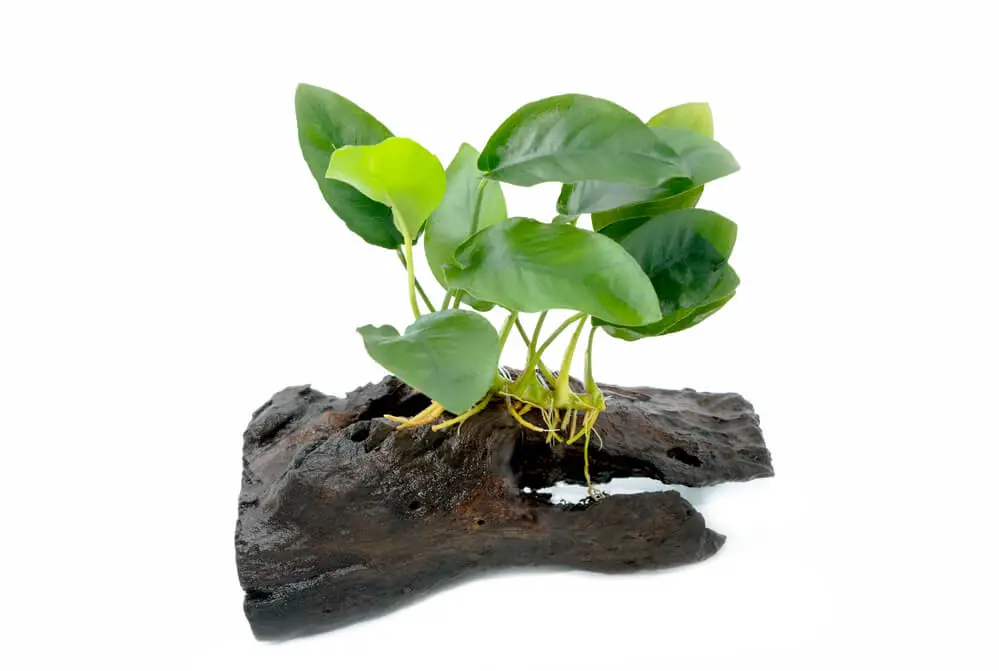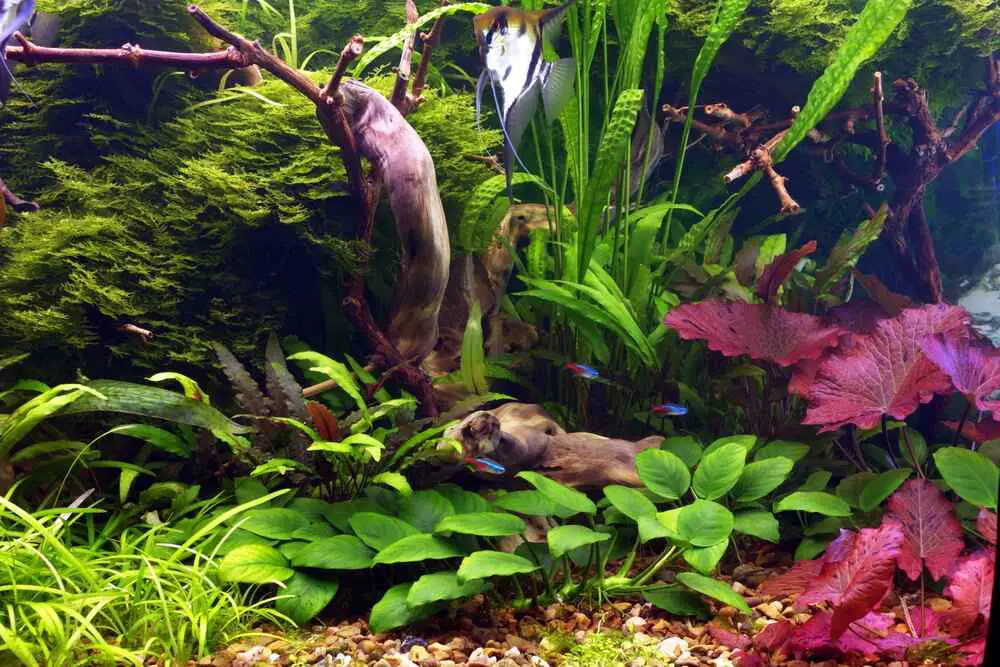If you’re an aquarium hobbyist, you may have noticed that Anubias plants can be on the pricier side. But why is that?
Anubias plants can be relatively expensive for a few reasons. First, they are a popular and sought-after plant in the aquarium hobby, and demand for them can drive up the price. Secondly, they are not easy to propagate, which can limit their availability and also contribute to their cost.
Read on to learn about the cost of Anubias plants, the reasons behind their high price tag, how to get them at a relatively lower price, and a few less-expensive alternatives to Anubias plants.
How Much Do Anubias Cost?

Anubias plants are a popular and sought-after plant in the aquarium hobby, and their cost can vary depending on several factors.
One factor that can impact the price of Anubias plants is the size of the plant.
Smaller Anubias plants, such as those suitable for nano tanks, may cost around $5 to $15.
Anubias plants suitable for a large tank can cost $20-$50 or more, depending on size and variety.
The variety of the Anubias plant can also affect its cost. You could purchase some more commonly available varieties at a lower price than the rare Anubia varieties.
The location where the Anubias plant is being purchased can also impact its cost.
For example, Anubias plants imported from other countries may cost more due to shipping and import fees.
Additionally, the cost of Anubias plants may vary depending on the retailer or supplier.
How To Buy Anubias At A Cheaper Price?
You can purchase Anubias plants from various sources, and the cost can vary depending on where you buy them.
Generally, Anubias plants may be less expensive if you can obtain them from other hobbyists or through online trading groups or forums.
The seller may have propagated these plants and may be willing to sell them at a lower price than what you would find at a retail store.
On the other hand, Anubias plants that are purchased from retail stores or tissue-culture vendors may be more expensive.
Retail stores may mark up the price of the plants to cover their costs, such as rent and employee salaries.
Tissue-culture vendors, who produce Anubias plants through tissue culture, may also charge a higher price due to the labor and equipment required to produce the plants.
It is always a good idea to shop around and compare prices from different sources to find the best deal on Anubias plants.
Why Are Anubias So Expensive?
#1. High-Demand
First off, demand for Anubias plants is high in the aquarium world.
They are known for their hardiness, low maintenance requirements, and ability to thrive in various water conditions, making them a go-to choice for many hobbyists. When demand is high, prices tend to follow suit.
Read Related: Do Anubias Need Fertilizers?
#2. Hard To Propagate
Anubias plants are relatively difficult to propagate compared to some other aquatic plants.
To propagate Anubias plants through rhizome division, you must carefully remove the plant from the substrate.
The rhizome (the plant’s underground stem) must be carefully separated into sections, each with at least one set of leaves.
These sections can then be planted in the substrate or left floating in the water until they develop roots.
This process can be challenging and time-consuming, requiring a gentle touch to avoid damaging the plant.
Overall, the slow and labor-intensive process of propagating Anubias plants can contribute to their relatively high cost. In addition, it takes time and effort to produce new plants through the rhizome’s division, which can limit their availability and increase their price.
Related Read: Can Anubias Survive Without Leaves?
Cheap Alternative To Anubias
If you’re an aquarium hobbyist looking for affordable alternatives to Anubias plants, there are several options to consider.
These plants are usually easy to care for and can thrive in various water conditions, making them a great choice for many aquariums.
Here are some popular, budget-friendly alternatives to Anubias plants, along with their approximate cost:
#1. Water Wisteria
Overview: Water wisteria (Hygrophila difformis) is a popular aquatic plant native to India and Southeast Asia. It is commonly used in aquascaping and is known for its attractive, lacy leaves and rapid growth rate.
Light requirements: Water wisteria is a moderate light plant that does best with moderate to high lighting levels. It can tolerate lower light levels but may grow slower and have smaller leaves.
Growth rate: Water wisteria is a fast-growing plant, so it is important to trim it regularly to prevent it from overtaking the aquarium. It can grow up to 2 inches per week under optimal conditions.
Difficulty level: Water wisteria is considered an easy plant for aquarium hobbyists. It is relatively low maintenance and can tolerate a wide range of water parameters. However, it does best in a well-established aquarium with a nutrient-rich substrate and a good filtration system.
Cost: Water wisteria generally costs around $5 to $10, a cheaper alternative than anubias, which can sometimes even cost up to $20 and above.
#2. Hornwort:
Overview: Hornwort (Ceratophyllum demersum) is a popular aquatic plant native to North America and Europe. It is commonly used in aquascaping and is known for its long, thin leaves and ability to absorb excess nutrients from the water.
Light requirements: Hornwort is a low-light plant that can endure a wide range of lighting conditions. It can thrive in both low and high-light environments, although it may grow more slowly in low light.
Growth rate: Under optimal conditions, hornwort can grow up to 2 inches per week. This rapid growth rate makes it important to trim the plant regularly to prevent it from overtaking the aquarium. Hornwort can grow quite tall, and generally, in aquariums, it can grow up to two feet long.
Check out this guide to learn more about how fast hornwort grows.
Difficulty level: Hornwort is considered an easy plant for aquarium hobbyists. It is relatively low maintenance and can tolerate a wide range of water parameters. It does not require a substrate and can be anchored to the bottom of the aquarium or left to float freely.
Cost: Hornwort typically costs around $5 to $10, depending on the size of the plant and the retailer.
Related Guides:
- Does Hornwort Need Substrates? (With Pros And Cons)
- Does Hornwort Need Fertilizer? (5 Best Fertilizers For Them)
#3. Anacharis:
Overview: Anacharis (Egeria densa) is a popular aquatic plant native to South America. It is commonly used in aquascaping and is known for its long, thin leaves and ability to absorb excess nutrients from the water.
Light requirements: Anacharis is also a low-light plant that can tolerate a wide range of lighting conditions. It can thrive in both low and high-light environments, although it may grow more slowly in low light. Read this guide to learn more about anacharis light requirements.
Growth rate: Anacharis has a tremendous growth rate. Sometimes, it has been reported to grow even up to 4 inches per day.
Difficulty level: Anacharis is considered an easy plant for aquarium hobbyists. It is relatively low maintenance and can tolerate a wide range of water parameters. It does not require a substrate and can be anchored to the bottom of the aquarium or left to float freely.
Cost: Anacharis typically costs around $5 to $10 based on the place from where you buy it and the plant size.
Is It Worth It To Have Anubias In Your Planted Aquarium?
It mainly depends on your needs and priorities.
If you like the look of anubias and the price is not an issue, then it’s worth adding Anubias to your aquariums.
Here are some pros and cons of anubias plant to help you whether or not to have it in your aquarium.
Pros of Anubias Plants:
- Hardy and able to thrive in various water conditions, including fluctuating temperatures and pH levels.
- Low maintenance, requiring minimal attention and care once they are established.
- Attractive, with broad leaves that add texture and interest to an aquascape.
- Suitable for a variety of settings, from planted tanks to community tanks.
- Suitable for both beginner and experienced aquarium hobbyists.
Cons of Anubias Plants:
- Relatively slow-growing compared to some other aquatic plants.
- Relatively difficult to propagate compared to some other aquatic plants.
- They can be relatively expensive due to their high demand and the labor-intensive process of propagating them.
Related Read: Why Do Anubias Turn Yellow?
Wrapping Up
Anubias plants are a popular choice for aquarium hobbyists due to their hardiness, low maintenance requirements, and ability to thrive in a variety of water conditions.
However, they can be relatively expensive due to their high demand and the labor-intensive process of propagating them through the division of the rhizome.
If you are looking for affordable alternatives to Anubias plants, several options are available. Some options include Water Wisteria, Anacharis, and Hornwort.
These plants are relatively easy to care for, inexpensive, and a good choice for those looking to save money while adding beautiful plants to their aquarium.
Recommended Reading:
- Does Anubias Need Light?
- How Long Can Anubias Be Out Of Water?
- Anubias Has Holes In Leaves? [Top 5 Causes And Solutions]
Hi! I’m Praveen Ghoshal, the founder of eFishkeeping.com. Inspired by my Dad, I got interested in fishkeeping when I was a kid. Since then, I have been involved with this hobby. Currently, I have 3 fish tanks at our home, and I enjoy this hobby with my full family. Read more about me here.







